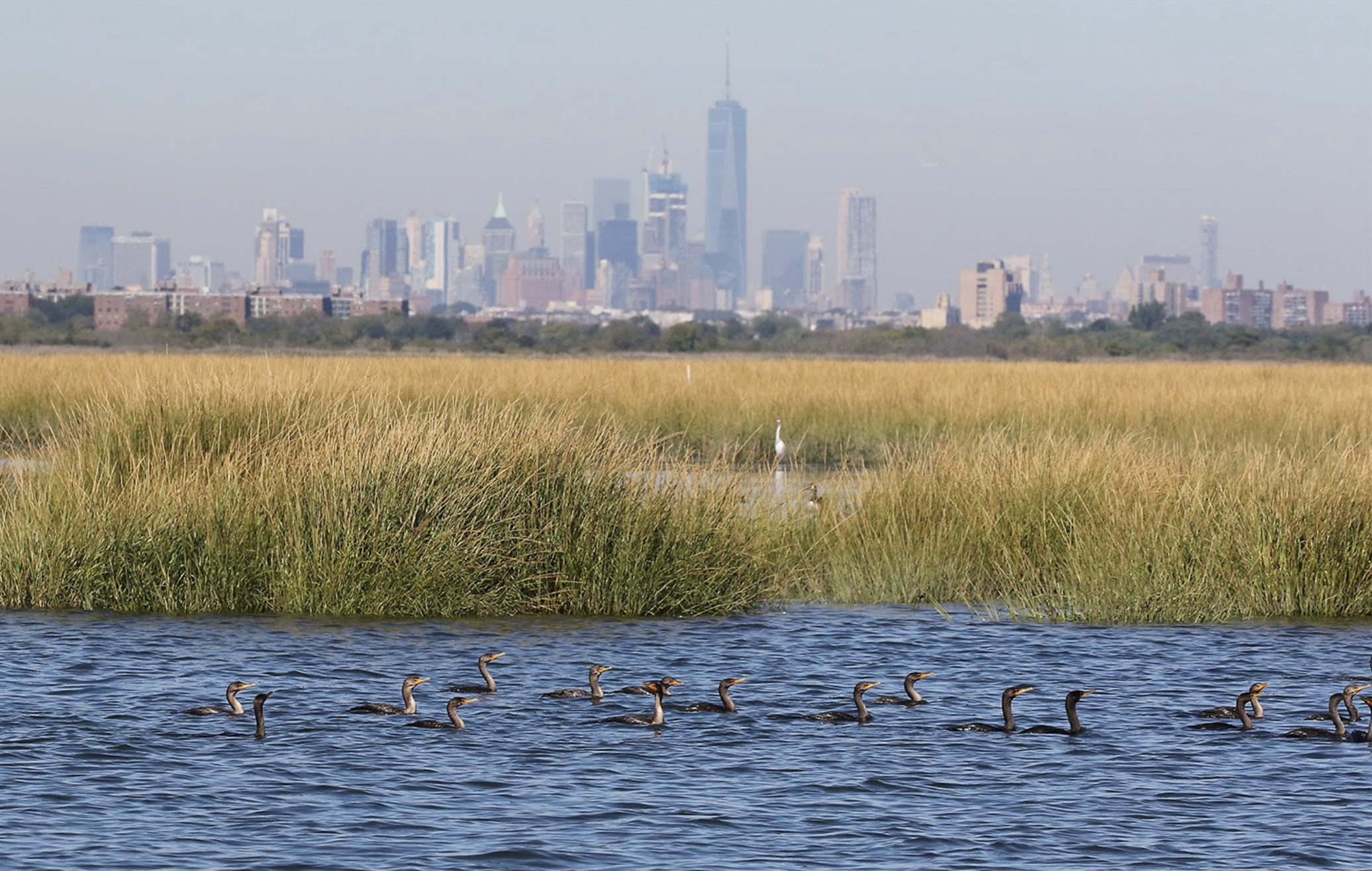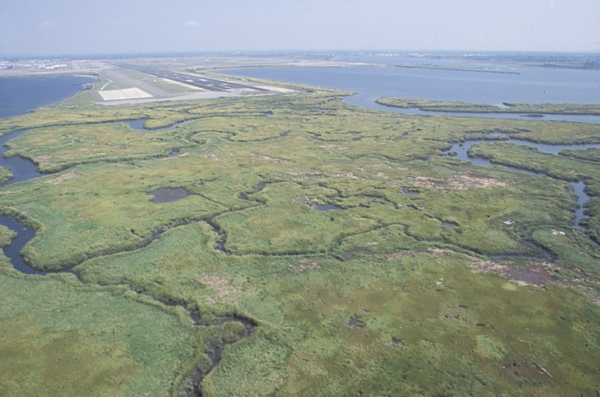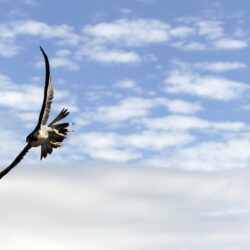
A wildlife refuge becomes a pandemic refuge

On one of Erin Schoppmeyer’s school programs she led at Jamaica Bay Wildlife Refuge, one student asked her what that funny smell was. She wasn’t sure what the student meant, but soon realized they were talking about the smell of the outdoors.
“That is a smell I grew up with, so it’s familiar,” says Schoppmeyer, one of Jamaica Bay’s park rangers. “But it was new for that student. So I just love the way Jamaica Bay is a gateway for people to the natural world.”
Nestled off the coast of Brooklyn, Jamaica Bay is part of a network of sites part of Gateway National Recreation Area, managed by the National Park Service. Boasting 9,155 acres, Jamaica Bay is larger than Manhattan’s Central Park, a fact that the park’s rangers like to highlight.

Though New York City is home to over 20 National Park Service sites, few of them offer the natural solace Jamaica Bay does. While tourists used to flock to the more popular sites including the Statue of Liberty and Hamilton Grange, Jamaica Bay attracted bird watchers and New Yorkers who yearned for a bit of an escape from the city bustle.
When the pandemic forced us to stay within our local boundaries, outdoor areas became a refuge for many. Where pre-pandemic, the park saw, on a good day, 50 visitors in the colder months, pandemic era weekends bring packed parking lots and a site filled to capacity. “It’s a safety issue to have that many visitors, for social distancing,” says Schoppmeyer. “But also just cars were parking along Cross Bay Boulevard.”
Related Article: Collectors Petition to Preserve 1950s Household Trash at Marine Park’s Bottle Beach
The influx of curious and indoor-fatigued visitors has also meant that ranger programs are filling up at warp speed. Demand is high for eager participants to find outdoor activities that are safe and close to home. Recently, rangers have started doing live programs again after a several month hiatus. Capped at between 10 and 15 people, the programs fill up quickly, offering intriguing themes like sunset walks and full moon hikes.
Don Riepe, Jamaica Bay Guardian with the American Littoral Society, has been involved with the area for over thirty years. Working closely with the National Park Service and other organizations to protect the bay and surrounding areas, Riepe has his hands in a variety of projects.
“From the beginning of the pandemic, when everything else was being shut down, restaurants and theatres, more people were coming to the wildlife refuge, especially on weekends,” says Riepe. “These were people that didn’t come here generally before. We had a lot of newcomers coming in to walk the trails. They realized it is a beautiful park, a lot of open space, and many people didn’t realize it was here.”

With more interest in the park, Riepe and Schoppmeyer both had to adapt their roles a bit, including figuring out how to still offer programming in new and creative ways. Schoppmeyer, for example, hosts virtual “Ask a Ranger” series for school groups in the education department while her creative colleagues in the interpretation division put on intricate virtual puppet shows complete with homemade puppets and sets and in-house filming and editing. Though puppet show design skills were not part of the park ranger job description, being able to adapt is necessary.
Riepe has also adapted his usual programming for an online audience. His Zoom talks almost tripled in size compared to his in-person ones, going from roughly 35 people live to over 90 virtually. Even when we come to a place where we can get back to more in-person offerings, Riepe says online events are something that may carry over and become a permanent fixture. “I like virtual programs because it brings in different people,” says Riepe. “People from all over the country can just click the link and join in.”

Still, for Riepe and Schoppmeyer, being able to experience Jamaica Bay in person reigns supreme. “I see so many people who this is their first experience in a park,” says Schoppmeyer. “Gateway is truly a lot of New Yorkers gateway to not just National Parks, but the outdoors in general.”
Jamaica Bay is the only wildlife refuge in the National Park System and it is one of the northeast’s largest bird habitats. During the pandemic, bird watching has curiously become more popular amongst New Yorkers who happen to live close to areas prime for the hobby, including the Bay.

“Just from my own observations, there’s definitely not just the same cookie-cutter type of people [bird watching]” says Schoppmeyer. “I’ll see families out there. Young kids with guidebooks and binoculars. That’s pretty cool.”
Though it may be hard to catch Schoppmeyer and her fellow rangers in person currently as the visitor center at Jamaica Bay is closed, the trails are still open, and rangers still reachable by phone for any questions. The beloved Junior Ranger program is still accessible as well, with safety protocols in place for the smallest park enthusiasts to receive their badge.
“I think the pandemic has made a lot of us think more about what we can do at home or nearby,” says Riepe. “And allowed us a chance to get to appreciate local parks.”
Leave a Comment
Leave a Comment





